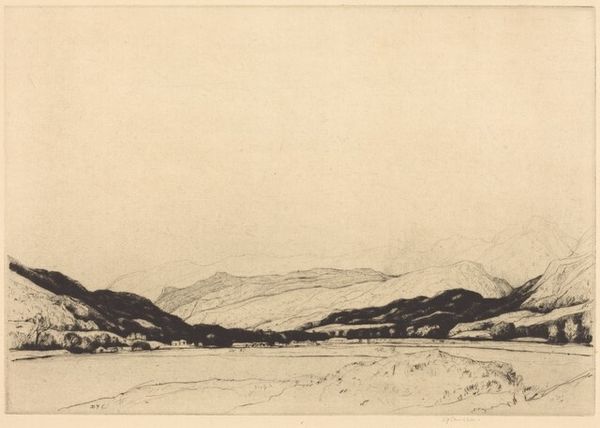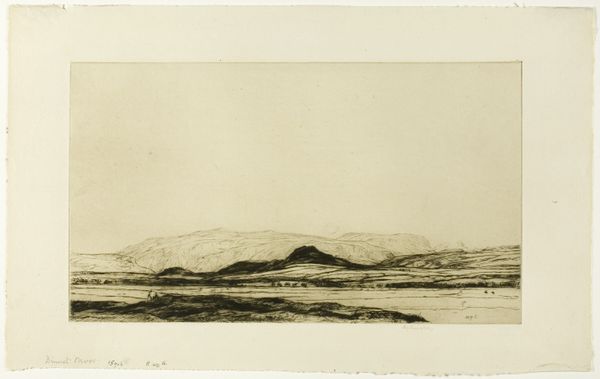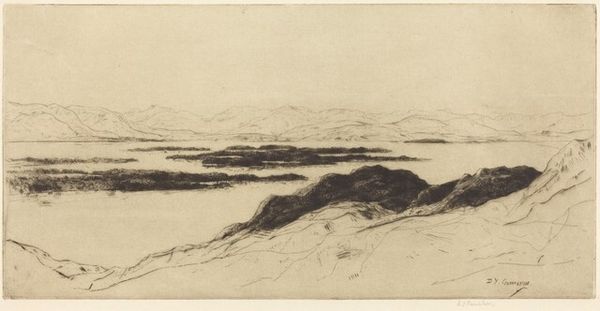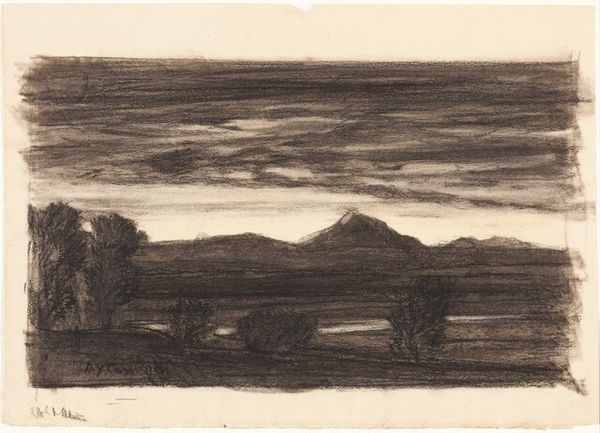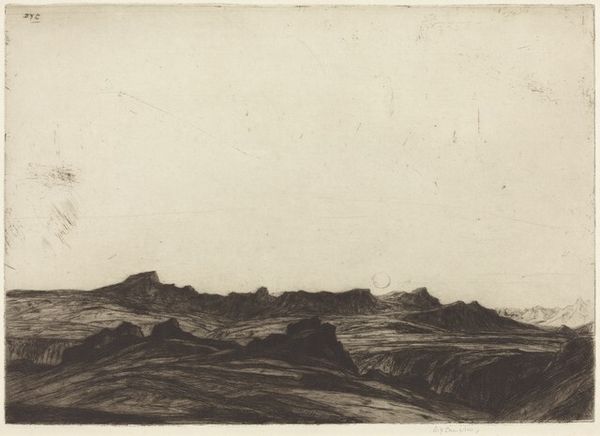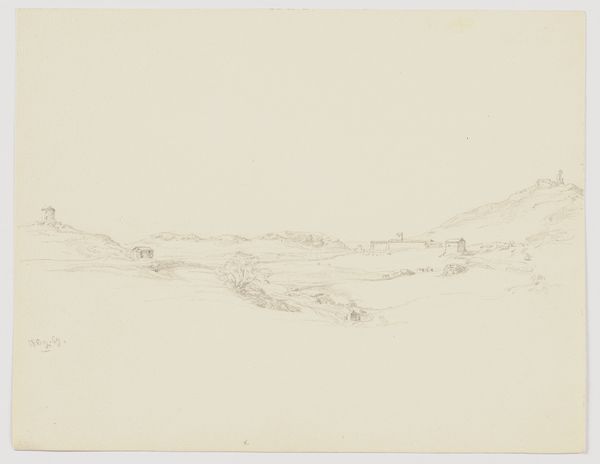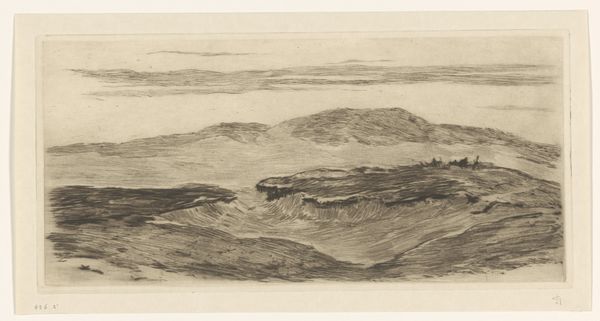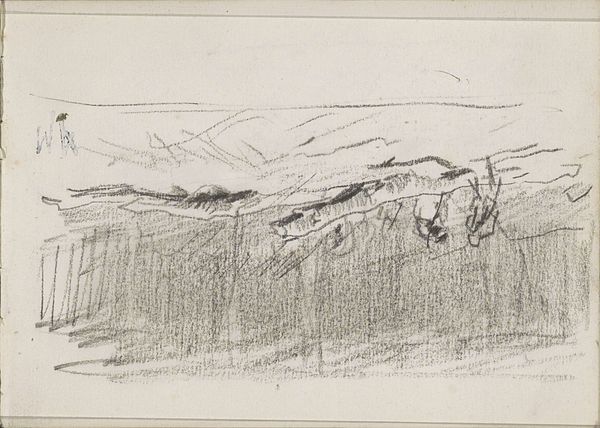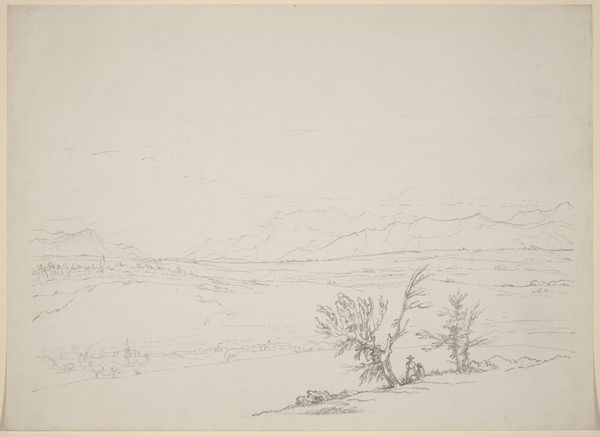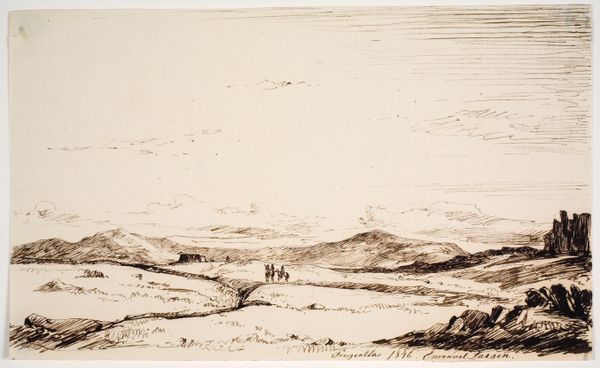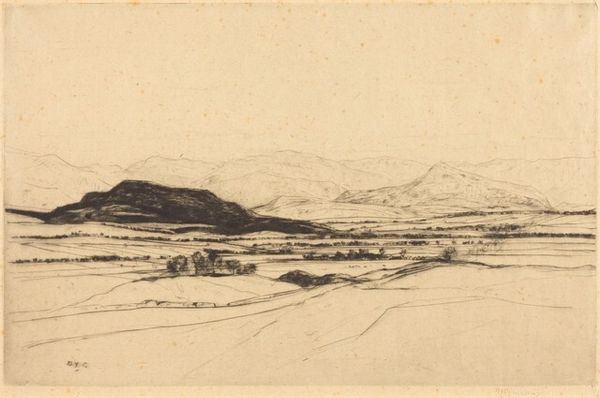
drawing, print, etching
#
drawing
# print
#
etching
#
landscape
#
etching
Copyright: National Gallery of Art: CC0 1.0
Curator: This is "Dinnet Moor," an etching created by David Young Cameron in 1912. Editor: There’s a somber elegance here. The tonal range, so limited yet conveying depth and distance… quite evocative, wouldn’t you agree? Curator: Absolutely. The Scottish Highlands became increasingly romanticized throughout the late 19th and early 20th centuries. We see artists responding to that heightened interest in landscape and place. Cameron even served as the King's Painter and Limner in Scotland, underscoring the importance of Scottish identity at this moment. Editor: I notice the sky occupies at least half the picture plane. It feels less like empty space, and more like a conscious choice. It’s almost oppressive, that vast expanse. Curator: You are likely correct. In Cameron's prints, stark skies often reflect the sociopolitical moods of the time—the anxieties before the First World War, perhaps. It is important to consider the rise of nationalism. The landscapes, while beautiful, served a function, bolstering pride and patriotism in a changing Europe. Editor: The mountains are rendered with incredible detail, such precision in the etching lines creating that illusion of form. But in the foreground, that’s just murky shadow. It provides strong contrast, doesn’t it? The way the horizontal lines dominate the image gives one an impression of stark isolation. Curator: Isolation may also hint at the clearances, which dramatically altered settlement patterns across the Highlands, or at the increasing industrialization elsewhere drawing people away from this lifestyle. This would align with his role in the cultural milieu of the era, lending to discourses around ideas of what Scotland means. Editor: Yes, the social aspect adds depth, of course. Though I am more fixated on its compositional brilliance. Curator: Its interesting to observe your reaction because art provides an opportunity to consider history as a dynamic element of our human existence. Editor: True, and studying art makes it easier to contemplate our relation to nature's forms and the complex relationships of objects in visual space.
Comments
No comments
Be the first to comment and join the conversation on the ultimate creative platform.
